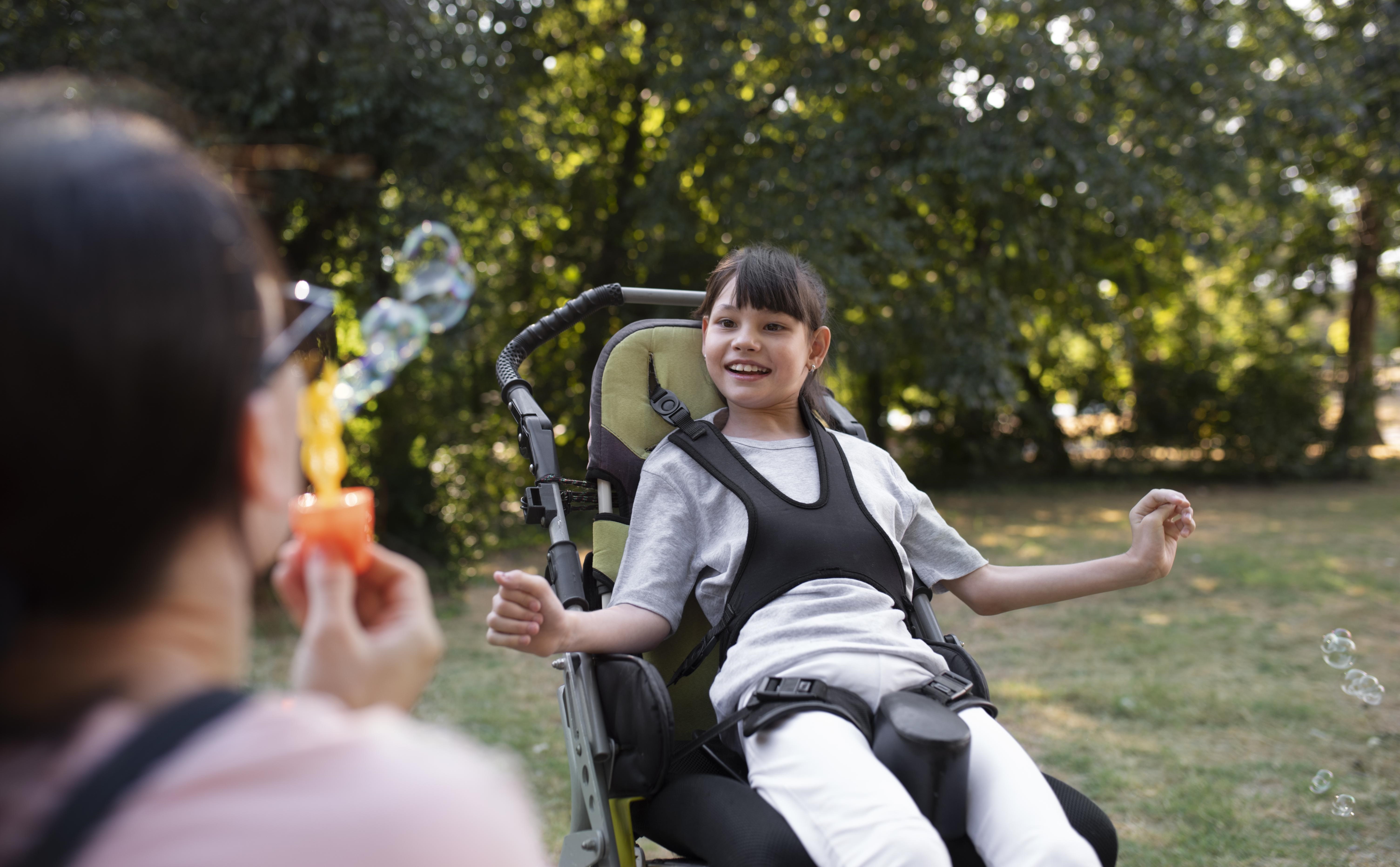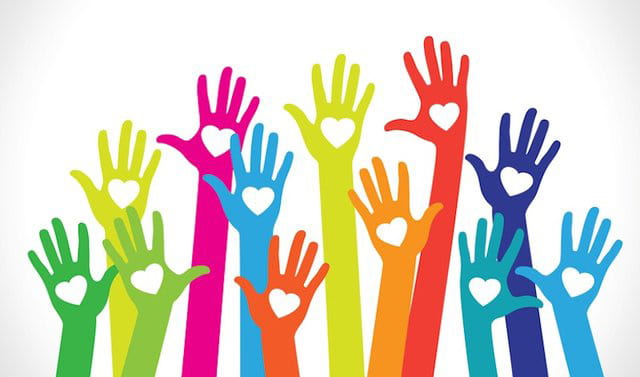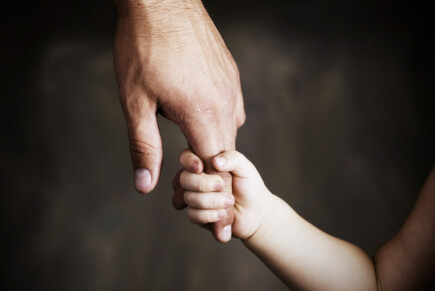
What is cerebral palsy in children? Causes and symptoms
Cerebral palsy is a widespread neurological condition that manifests as irreversible but non-progressive damage to the brain. This condition can occur during pregnancy, at birth or during the period of early childhood development. The disease affects the brain during its developmental period - from birth to the first five years of a child's life.
What are the forms of cerebral palsy?
-
Spastic Cerebral Palsy: This is the most common form of the disease, affecting about 70-80% of all cases. It is characterized by stiffness of the muscles which makes movements difficult. These children often have trouble walking and performing various motor functions.
-
Athetoid Cerebral Palsy: This form accounts for about 10-20% of cases and is characterized by uncontrollable, slow and writhing movements. These movements can affect the hands, feet and even the face, making daily activities a real challenge.
-
Atactic cerebral palsy: This is the rarest form, affecting about 5-10% of cases. It is characterized by problems in coordination and balance. Children with this form have an unsteady gait and difficulty with precise movements such as writing or pushing small objects.
Affected functions and manifestations
The impairment can affect various functions of movement and coordination, including:
-
Problems with muscle tone
-
Movement disorders
-
Lack of balance and coordination
Cerebral palsy: causes
The neurological condition occurs as a result of damage or improper development of the brain, which can happen before, during or after birth. This damage affects the brain's ability to control muscles and impairs coordination, leading to various forms of motor impairment.
Internal (prenatal) factors
Prenatal factors are those that affect the fetus during pregnancy. These include:
-
Rubella, cytomegalovirus, toxoplasmosis and other infections can damage the developing fetal brain.
-
Diabetes, high blood pressure and other chronic diseases can increase the risk of fetal brain damage.
-
Hypoxia (lack of oxygen) can cause damage to brain cells.
External (postnatal) factors
Postnatal factors affect the baby after birth and can also contribute to the development of the condition:
-
A long or difficult birthing process, including cesarean section at birth, can cause physical damage to the brain.
-
Meningitis, encephalitis, and other severe infections can damage a newborn's brain tissue.
-
Bumps or falls that cause brain trauma can lead to damage.
-
Genetic mutations and inherited diseases can predispose to the development of the condition, in the presence of additional prenatal or postnatal stressors.
Adverse living conditions, poor medical care and lack of appropriate prenatal care can also increase the risk of developing this condition.
Cerebral palsy: symptoms
Recognition of early symptoms is essential for timely diagnosis. Parents and doctors should be alert and watch for the following signs that may indicate the development of this condition:
Delay in motor development
One of the most common and early symptoms is delay in motor development. Parents may notice that their little one is not covering the standard developmental milestones such as sitting, crawling or walking in the usual time frames. If a child cannot sit up independently by 8 months or does not start walking by 18 months, this may be a sign of motor difficulties.
Abnormal body movements or postures
Another early manifestation is atypical body movements or positions. Children may have uncontrollable or clumsy movements that appear unnatural. If he holds his arm or leg in an odd posture or performs movements that are unusual for his age. Spastic movements, where muscles are too tight and clumsy, are also a common symptom.
Coordination and balance problems
Coordination and balance problems are also among the first signs of cerebral palsy. Parents may notice difficulty standing, walking or performing tasks that require the use of fine motor skills such as grasping small objects. Children with the atactic form of cerebral palsy, for example, may have an unsteady gait and fall frequently, while those with the athetoid form may have uncontrollable and slow movements.
Can children with cerebral palsy have a normal life?
This condition is often perceived as a severe diagnosis, but with appropriate support and interventions, children with cerebral palsy can live full lives. The options for children are numerous and depend on each child's individual needs and abilities.
What are the options for children with cerebral palsy?
Children with this brain injury can attend school, participate in sports and cultural activities and develop their talents and skills. Many excel in areas such as art, music and even sports that are adapted to their physical abilities.
What is the role of early intervention and therapies?
Early intervention is essential. It involves different forms of therapy that help improve motor skills, communication and social abilities. Physical therapy can help strengthen muscles and improve coordination. Occupational therapy focuses on developing fine motor skills and activities of daily living, while speech therapy helps improve speech and communication.
Support and adaptation
Support from the family, school and community is key to children's successful integration into society. Adapted curricula, resource teachers and technological aids can greatly facilitate the learning process and daily life of children.
Treatment costs
The treatment and maintenance therapy of a child with cerebral palsy requires significant financial resources that often become a challenge for families. Costs include medical care, therapies, specialized equipment and other accompanying needs.
-
Annual medical costs are many times higher than those of a child without a disability. This includes frequent visits to specialists, medical checkups, and treatment for co-occurring health problems.
-
Children need regular sessions in the various therapeutic modalities that are essential for improving motor skills and communication. Unfortunately, they are a significant expense for families, especially when regularity of at least several sessions per week is required.
-
Specialised equipment such as wheelchairs, communication devices and mobility aids are needed to ensure maximum mobility and independence. These aids are extremely expensive but are essential for the quality of life of the persons concerned.
-
Medication to control spasticity and pain, as well as the necessary surgical interventions, are part of comprehensive care. These therapeutic agents also contribute to the high costs associated with this disease.
Run a campaign through PavelAndreev.ORG's online donation platform to support a child with cerebral palsy
The cost of treating children with cerebral palsy is enormous. For many families they are prohibitive, but the funds raised through donations can make a huge difference to those in need. The online donation platform PavelAndreev.ORG provides an opportunity to start campaigns to support children suffering from cerebral palsy as it brings together people willing to help.
Don't waste any more time and start a campaign right now on PavelAndreev.ORG.
How does the PavelAndreev.ORG online donation platform work?
PavelAndreev.ORG is an innovative platform created with the mission to help those in need by collecting donations from a large group of people. It offers an easy and secure way to start and manage charity campaigns. The platform is intuitive and accessible to both campaigners and donors, making it the ideal place to raise funds for the treatment of children with cerebral palsy.
The process of starting a campaign through the PavelAndreev.ORG platform is simple and fast. First select the "Start a Campaign" option, fill in the required information and simply follow the steps.
Campaign Promotion Steps:
-
Describe the story and needs of the person in need. Add photos to engage and inspire potential donors.
-
Use social media, email, and other channels to share information about the campaign with your friends, family, and the entire community.
-
Thank each donor personally and share regular updates on funds raised and treatment progress.
Make a donation for a child with cerebral palsy
Donations play a critical role in the lives of children affected by this brain injury and their families. They provide needed funds for medical procedures, therapies, specialized equipment and other vital resources that can significantly improve the quality of life for these children. For many families, the cost of treatment and rehabilitation is prohibitive, and donations are a ray of hope and support.
The donation process is easy and affordable for anyone who wishes to help. You can make your donation through PavelAndreev.ORG, an online donation platform designed to make it easy to raise funds for charitable causes.
-
Visit the PavelAndreev.ORG website.
-
Search for a campaign that supports a child with cerebral palsy and read more about it.
-
Click the donate button and follow the instructions to fill in your details and the amount you wish to donate.
-
Once you have made your donation, share the campaign information with your friends and family to attract an even larger audience.
Help someone in need today by donating to PavelAndreev.ORG. Your support can change his or her fate and bring joy and hope to his or her family!

What is the approximate cost of publishing a book?
If your main goal is simply to get your book printed, using free self-publishing platforms may be the right decision. The writing itself is the biggest reward for many people, and getting published may be just a formality. However, if you want to sell your book and reach a wide audience, you need to invest in professional services.Without them, it's hard to compete with traditionally published books. Factors such as professional editing, cover gr...

What is a philanthropist and philanthropy?
Everyone can be a philanthropist and be more effective in making a difference. Here's how. A philanthropist is a person who donates time, money, experience, skills or talent to help create a better world. Anyone can be a philanthropist, regardless of status or net worth. What is philanthropy? The Greek playwright Aeschylus coined the term philanthropy in the 5th century B.C. It meant "love of mankind." Today, philanthropy means generosity in a...

Narcistic Psychotic Disorder: Symptoms, Treatment and How We Can Help You
Mental health is increasingly important in society, and interest in this topic is growing significantly. Mental illness affects a huge number of people worldwide. One of the lesser known illnesses affecting mental health is narcissistic personality disorder. Narcissistic personality disorder is a condition that often goes undiagnosed, and this leads to even greater suffering for those affected. People with this mental condition have great diffic...

How to quickly raise money to adopt a child
Children are the greatest gift a person can receive throughout his life! And if fate has not been kind enough to ordain you to be a parent, institutions and organizations have found a way to give this right to anyone who has the heart and soul for it. According to statistics from surveys done in 2018, the figure of 430,000 children, works in plus towards foster families. For adopted children, a home and unconditional dedication and love is extre...

